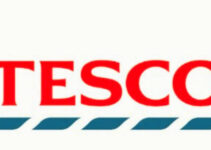Kodak is an iconic American organization and it has been in the photography business market since 1892. Photography lovers were aware of innovative Kodak cameras and films. But the trend of digital cameras and digital photographic tools threaten Kodak’s core business operations; decreasing its sales and profitability to a great extent. Today, we’ll discuss Kodak change management case study; its plans and strategies, strengths, competitive capabilities, and challenges to the company.
The digital transformation from physical camera films to digital cameras and other products has become a great example for business students all over the world. In fact, Kodak segmented its production into three major areas;
Digital Films
This area of Kodak comprises film and digital imaging systems and it manufactures traditional and digital films and cameras for the following parties;
- Entertainment industry
- Professional photographer
- Ordinary consumers
Health Imaging
Kodak’s health imaging targets the healthcare industry by developing health imaging products like;
- Processing equipment
- Chemicals
- Medical films
Commercial Imaging
As the name implies, commercial imaging targets the insurance market, banking, and industrial market; it manufactures the following products;
- Digital printing equipment
- Scanner
- Inkjet printers
- Micrographic Films
- Graphic, industrial, and aerial products
Factors Caused Kodak Towards Digital Transformation
Market Competition
When Fuji Photo Film Co. a Japanese company entered the photographic market in 1984, it offered people a second choice and customers started switching their cameras. Fuji launched 400-speed color photo film in the market and it was roundabout 20% cheaper than Kodak. However, soon after other competitors started entering the market and the company started losing its market share.
Failed To Recognized Digital Trends
The 1980s were the birth of many of today’s tech giant companies, and Kodak failed to recognize the digital transformation trend. Instead, the company held on to its core traditional business model and other tech companies were moving towards digitalization. Finally, when Kodak realized the significance of digitalization, it was very late.
Plans & Strategies of Kodak
Some of the key strategies that have allowed Kodak towards digital transformation and move beyond traditional camera films, and are as follows;
Joint Venture
Kodak started a joint venture with Microsoft and HP to develop new products based on the market demands. They both are the expert in the computer and tech industry and collaborating with them helped the company to expand its market competencies.
Manufacturing Assurance Process
Kodak started working on a new product development strategy by the name of MAP (manufacturing assurance process) and it helps the company in the following ways;
- Improve the product quality
- Amplify product development processes
- Follow the systematic approach
Vertical Integration
Vertical integration allowed Kodak to integrate product development and continuous innovation and creativity. Speed and quickness is the key to decreasing product development and manufacturing cycle time.
Digital Strategy
As the name, the digital strategy allowed Kodak to take various steps toward digitalization and work on digital projects.
Diversification Strategy
Kodak has already got experience in implementing the diversification strategy and it helps the company to diversify its resources. But later the company changed its focus on the imaging businesses.
Strengths of Kodak Change Management Case Study
Some of the key strengths of the company that have made the transformation possible in the Kodak change management case study are as follows;
Vast Market Coverage
Kodak has been in the camera film business for more than 130 years, and the company has established a great distribution network with vast accessibility and market coverage. The company has achieved global distribution through the following sources;
- Professional Photographers
- Film processors
- Retail photography stores
Competitive Edge
Kodak invested a lot of resources in the research and development of launching innovative and creative photographic image equipment. Some of the key competitive capabilities of the company are as follows;
- Comprehension of recording and processing images
- Color managing capabilities
- Transferring digital images on the paper
- Thermal printing and color management
- Sensing complementary technologies
Great Intangible Assets
Distribution networks and brand equity are the key strengths of Kodak. They have helped the company to achieve a global leadership position in the photographic industry and earned worldwide brand recognition. The company’s products have the support of professional photographers, film processors, and retail photography stores.
Challenges to Kodak
As I mentioned earlier that Kodak failed to recognize the digitalization trend on time. By the time the company recognized the change, it was very late and the brand had lost a significant amount of market share to other digital camera brands. However, some of the key challenges and issues Kodak is facing in the digital camera field are as follows; (Kodak change management case study)
Competition
The digital camera industry has become highly competitive in recent years with a lot of new competition. Kodak had lost a significant amount of market share to its competitors. Now, the question is how the company would gain a competitive advantage over them.
R&D
Kodak is facing the challenging situation of developing its own research and development facility to launch digital camera products. Or the company should partner up with other tech brands and take advantage of their expertise.
Digital Strategy
All types of smartphones offer some type of camera and they all are the competitors of Kodak. Now, the question is what type of strategy the company should apply for the promotion of its digital camera products. What types of digital resources are available to the company?
Capital Investment
When we talk about digitalization and developing new tech products, then it requires a significant amount of capital investment in the new technology. The market opportunity Kodak wants to exploit, the company should check whether it has the resources for it or not.
Conclusion: Kodak Change Management Case Study
After an in-depth study of Kodak change management case study; we have realized that Kodak has successfully transformed into digitalization but still facing challenges. If you are learning about the digital transformation of Kodak, then you should keep in mind the abovementioned factors.
Ahsan is an accomplished researcher and has a deep insight in worldly life affairs. He goes Live 3 days a week on various social media platforms. Other than research writing, he’s a very interesting person.


